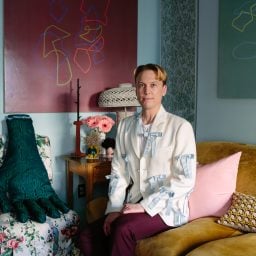Michael Diaz-Griffith wants to break the taboo on beauty.
The 36-year-old collector, author, and art and design historian has devoted nearly a decade of his life to educating a new generation—his contemporaries—about the world of antiques. Diaz-Griffith spent eight years with the Winter Show, one of the leading art, antiques, and design fairs in the U.S., as the associate executive director, where he focused his efforts on bringing in a new crop of collectors. He remains the co-chair of the Winter Show’s Young Collectors Committee, which launched in the 1990s when the number of antique enthusiasts under 40 dropped precipitously.
His efforts seem to have paid off, with antiques and a more decorative aesthetic ascendant in the culture over the past few years. The proof is in his forthcoming book The New Antiquarians: At Home with Young Collectors (Monacelli, June 28) is a lavishly illustrated exploration of 17 homes of collectors who bring the material culture of the past into their living spaces in strikingly experimental, unexpected, and at times undeniably fun new ways.
Ahead of the book’s debut, Diaz-Griffith spoke with Artnet News about shifting cultural understanding of objects from the past, the collectors who most inspire him, and his own deeply felt journey in the world of antiques.
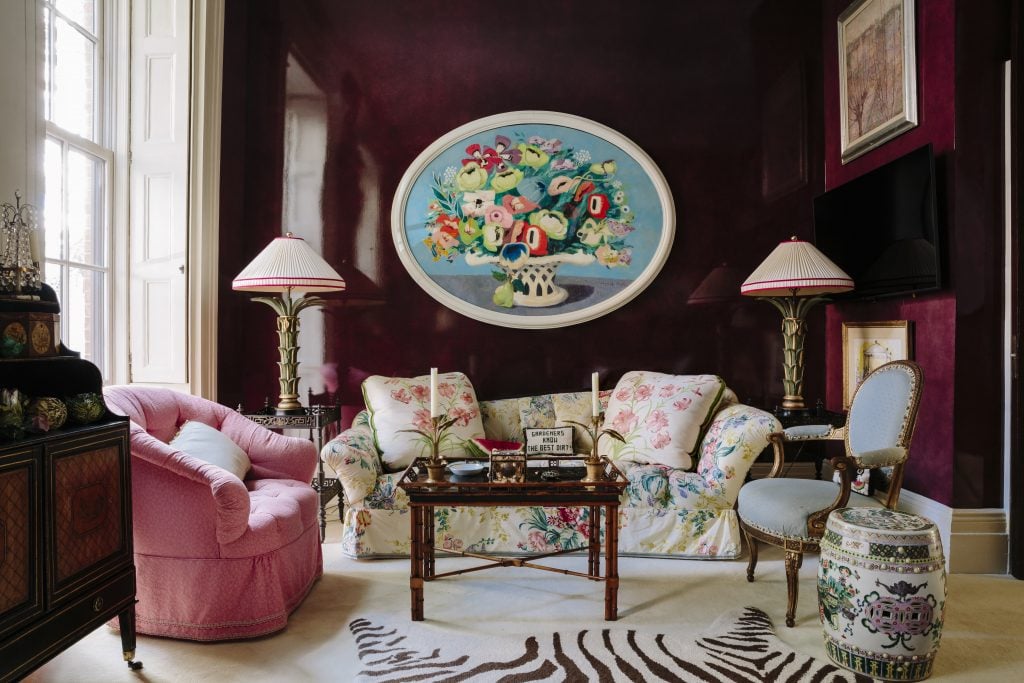
Interior view of the home of Emily Eerdmans in The New Antiquarians: At Home With Young Collectors. Courtesy of Monacelli. Photograph by Brian W. Ferry.
The Midcentury Modern Crisis
To understand the resurgence in decorative arts and ornament taking place today, one must look back to the field’s nadir—a crisis, in the minds of antique dealers, that began decades ago, says Diaz-Griffith, when Gen X collectors embraced the sleek aesthetics of midcentury Modernism.
“By the time I started at the Winter Show in 2014, the feeling was ominous,” he said. “The mood was very much ‘No young people are interested,’ while at the same time, most of the older dealers hated the idea of having to market their material online. This was a market that has endured by that point really 15 years of decline,” he recalled.
But Diaz-Griffith, who was in his late twenties at the time, had entered the field with unabashed enthusiasm and didn’t believe there was a lack of interest—rather, there was a barrier to entry.
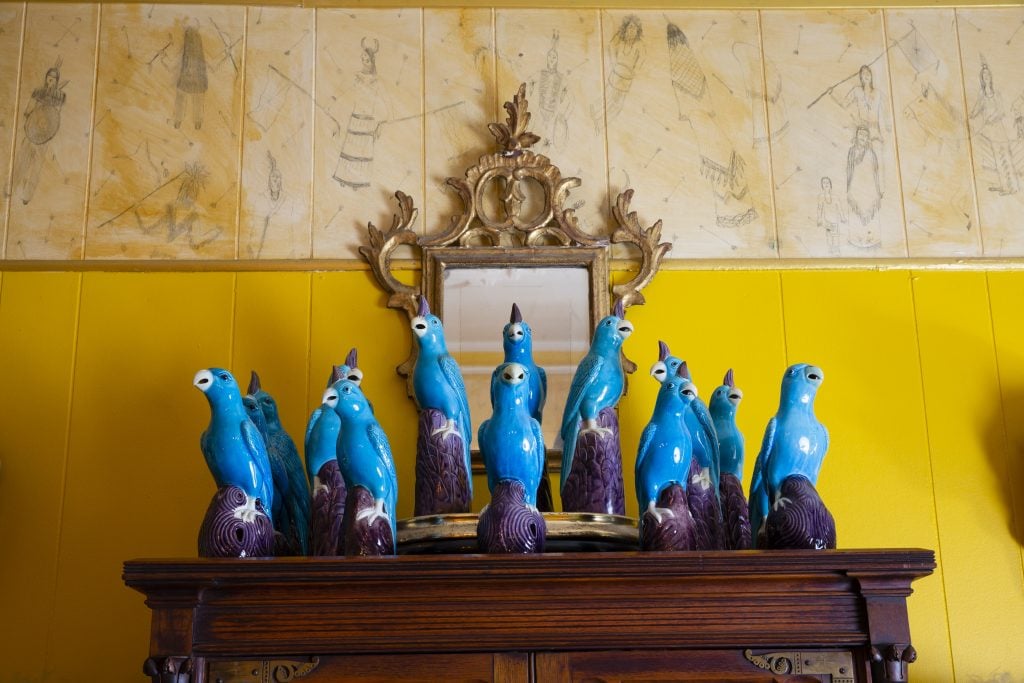
Interior view of the home of Sean McNanney and Sinan Tuncay in The New Antiquarians: At Home With Young Collectors. Courtesy of Monacelli. Photograph by Brian W. Ferry.
“During those years, I’m working in antiques, but I’m clubbing in Brooklyn. I’m going to my friend’s fashion shows and rooftop parties, just involved in a much wider world as a young person in a New York moment,” he recalled. “But no matter who I was hanging out with, whether it was Upper East Side girls or people in Brooklyn playing antique instruments, there was a taste for history, complexity, pattern and ornament, and rethinking history.”
With the Winter Show, Diaz-Griffith set about creating new structures, programs, and events for the New Antiquarians group, in a bid to convene a younger cohort.
“Yes, there were 80-year-olds and 90-year-olds at our parties in the beginning,” he said with a laugh. “But it’s the antiques world, babe. Everyone’s welcome.”
The Pendulum of Taste
Why might antiques be newly relevant? “It’s the alchemy of timing,” says Diaz-Griffith, of the current rage for ornament. “I’ve been talking about these subjects in the exact same way for 10 years, but everyone’s seen enough poofy sleeves and Jonathan Anderson ads with antique candlesticks. They’ve seen Laila Gohar using silver and bows. People have felt it from enough disparate contexts to understand that it’s coming together. There’s a raised awareness.”
Part of this shift he credits simply to the “pendulum effect” of taste over the decades. He also believes the internet has given even the most amateur collector a plurality of accessible information; someone can research any object they might pick up at a yard sale. And money, of course, has its place. Millennials, he said, have more recently “matriculated up” as collectors.
“Millennials, for all of the reasons that we know, have had reduced buying power since coming of age,” he explained. “For serious collecting of antiques and historic art, it’s been harder for a generation with a diminished buying power to muscle into that market. But now Millennials are assuming their proper status as adult collectors.”
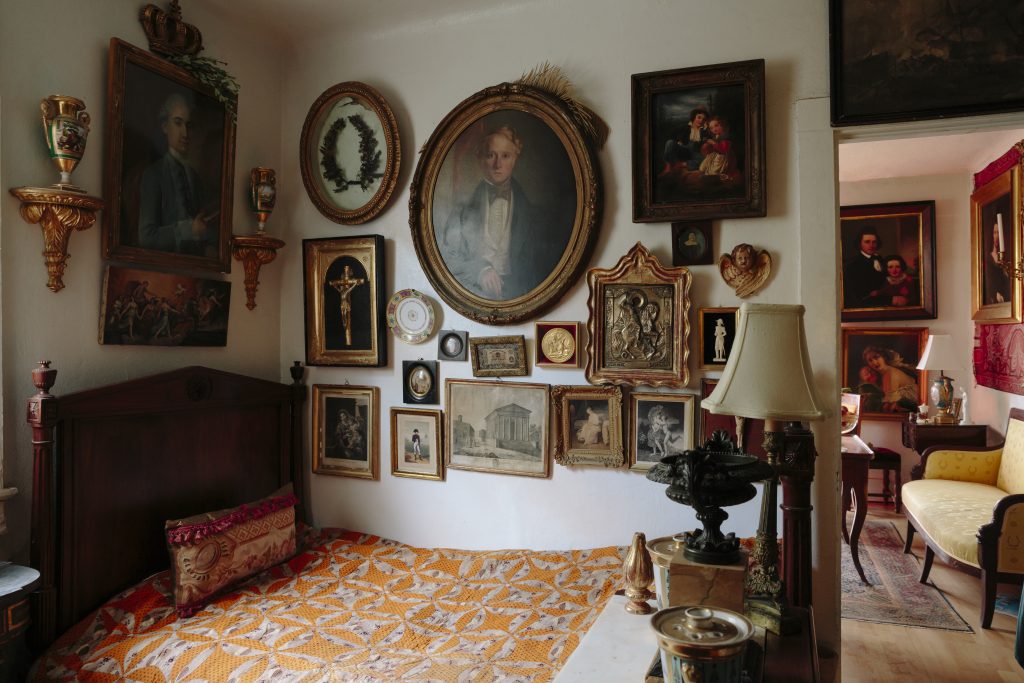
Interior view of the home of Andrew Lamar Hopkins in The New Antiquarians: At Home With Young Collectors. Courtesy of Monacelli. Photograph by Brian W. Ferry.
Even longtime holdouts are embracing more decorative aesthetics. “My downtown friends thought a bow was sinful five years ago,” he noted. “Now of course they’ve all got bows dripping from their candles, and everybody has draped fabric on their studio wall.”
Diaz-Griffith observes this shift in aesthetics with a judicious curiosity. “Taste is fickle, but collecting is about appreciating objects for what they are on a material level.”
Trading the Parlor for the Workshop
Diaz-Griffith wants collectors to reframe how they approach antiques at the most fundamental level, shifting from a focus on provenance—those who owned the objects—to those who made them.
“We are shifting from the context of reception, i.e. the parlor, and to the context of production, i.e. the workshop,” he noted. “Whether I’m at an antique show or at a gallery opening downtown or talking to people back home in Alabama, people are responsive to the idea of appreciating an object for how it was made and because of its beauty. We respect the maker, and we want to know more about their story and not just the parlor that it landed in,” he explained. “There’s a significant cultural shift in our ability to perceive the stories behind an object in a way that we used to not be able or willing to do.”
He cites Jonathan Anderson, creative director of the fashion house Loewe, as major force in his embrace of craftsmanship. “He has an understanding of history as a reference and engages with it while bringing new values to it,” he said. Diaz-Griffith also admires Baton Rouge collector Jeremy Simien, who is featured in The New Antiquarians. Of Louisiana Creole heritage, Simien is collecting the material culture of his people one acquisition at a time.
“For him, collecting is absolutely about resurrecting the material world of Creoles, and particularly Creoles of color,” Diaz-Griffith said, “In Jeremy’s case, a person of color or any other person who has been traditionally minoritized and whose material culture has literally been stripped away, robbed, dispossessed—living with old things is incredibly powerful.”
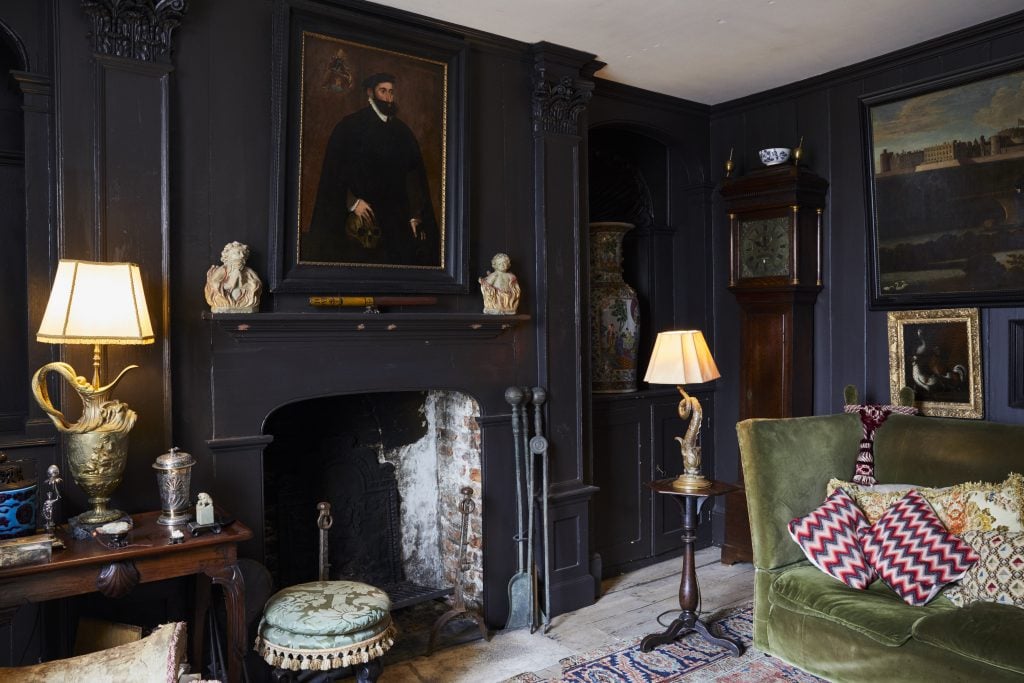
Interior view of the home of Pablo Bronstein in The New Antiquarians: At Home With Young Collectors. Courtesy of Monacelli. Photograph by Leon Foggit.
Diaz-Griffith notes that while The New Antiquarians was a natural spin-off from the collecting events he was orchestrating, it was also an opportunity for him to dig more deeply into the varied approaches collectors are espousing. This range, he believes, is reflective of a broader, synthetic approach to collecting, with younger collectors seeing older art and objects as a “sandbox of historical references in which to play.”
Antique dealers, he believes, should be open minded to new approaches. “Maybe a young collector is going to wrap some of their Windsor chairs in leather,” he said. “It’s not going to hurt the Windsor chair, but it’s going to look great and help the chairs feel relevant and exciting again.”
A History of His Own
Asked which historical figure he thinks he’s most similar to, Diaz-Griffith pauses for the first time in the conservation and asks to think on it. Later that same day, he calls again. “Sir John Soane,” he said, with matter-of-fact conviction. Diaz-Griffith was formerly the executive director of Sir John Soane’s Museum Foundation in London.
Soane is an apt choice. He was one of the preeminent architects of the Regency and a devoted cross-category collector of paintings, sculptures, architectural fragments and models, books, drawings, and furniture. Today, the Sir John Soane Museum is a beloved institution that showcases the collection in his 18th-century home.
Diaz-Griffith sees parallels to Soane with his own kaleidoscopic approach to collecting. “I love painted furniture and vintage textiles. I collect portrait miniatures. I collect watercolor renderings of interiors and portraits from the 19th century. I love odd pieces of ephemera that kind of have been conditioned in unusual ways by time or chance,” he explained.
One of his favorite objects is a postcard picturing two men. One of the men has been scratched out violently, so that Diaz-Griffith believes they might have been lovers. His New York City walk-up, he says, is filled with such peculiarities, and that paintings by his husband, artist Alonso Díaz-Rickards, offer a sense of coherence and gravitas to their home.

Michael Diaz-Griffith. Photograph by Brian W. Ferry.
But Soane strikes a deeper chord, too. “He was a bricklayer’s son,” Diaz-Griffith explained, “and he built a world of culture around him.” Diaz-Griffith was raised in Alabama amid the Clinton-era boom—his parents worked in real estate, building custom houses. From the time he was young, he came along with his parents and was encouraged to design and add elements to the homes.
“I was designing millwork and fireplace mantels before I was 10, forcing my parents against their will to build historical reproductions. Then I made them take me to house museums so that I could measure them,” he recalled. “It was very much the precocious gay child.”
Perhaps surprisingly, that early home environment was devoid of antiques. Diaz-Griffith is adopted and his mother’s mother was an antiques dealer. His mother lived through a tumultuous childhood and eschewed anything and everything old.
“When I was born, my parents built a new house to bring me home to. There was not a stick of antique furniture. There was not an old picture. There was not anything old in the house at all,” he explained. “I grew up in this intensely sterile, late-1980s gray, wall-to-wall carpeted environment,” he said. “But history is all over the South; you’re hearing it and smelling it. And I brought it into the home and I encouraged my parents to build differently. And over time, I brought my mother around to these objects through my passion for them.”
The desire to educate, he notes, is another parallel to Soane—but Diaz-Griffith stops short of offering a defined collecting philosophy.
“People don’t talk enough about how much we wish we could be different people or do things differently,” he said, “Collectors always sound so self-assured in interviews. It’s hard not to be influenced. When I walk into the house of a collector where everything is absolutely pristine, with three pedestals and three objects on each, I feel like—Of course, that’s how I should do it! Then I walk into another friend’s apartment and it’s decorated floor-to-ceiling, and I think, My god, this is how I want to live, with fabulous things below foot and above me in every direction! There’s no right way.’
But Diaz-Griffith sees collecting foremost as a kind of honesty with oneself. “Everybody has a level they return to, a waterline for how they want to live,” he said. “For me, it’s assembling the objects that I love around me, then finding a place for them. It’s an insistent expression.”
On May 12, Michael Diaz-Griffith will join Dominique Lévy of LGDR and Dr. Thomas S. Kaplan of the Leiden Collection for a TEFAF Talk titled “The Art of Connoisseurship,” moderated by Artnet News Editor-in-Chief Andrew Goldstein. For more information and to register, visit the event page. The talk will also be recorded and published as a special edition of Artnet’s “The Art Angle” podcast, which will be available here beginning May 18.









